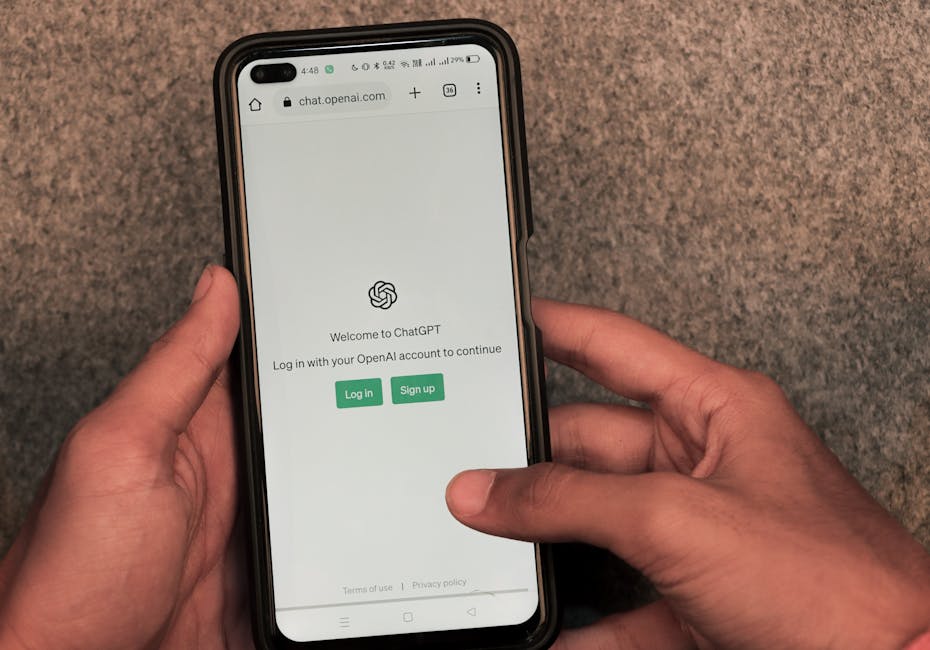 html
html
Scraping e-commerce sites the easy way
Why Scrape E-commerce? Unlocking Hidden Potential
E-commerce websites are treasure troves of information. Imagine having instant access to the latest prices, product details, inventory levels, and even competitor strategies. That's the power of web scraping. It lets you extract valuable data and use it to gain a competitive advantage in the market.
Think about it. You can monitor price monitoring and instantly adjust your own pricing to stay ahead. You can track inventory management and ensure you never run out of popular items. You can even understand customer behaviour by analyzing product reviews and ratings. All of this translates to better sales intelligence and ultimately, more profit.
The benefits are vast, and go beyond just typical "e-commerce" applications. Consider real estate data scraping for property listings, allowing quick aggregation and data analysis of market market trends. Or think about scraping news articles or social media feeds for sentiment analysis related to your brand.
What Can You Scrape? The E-Commerce Data Goldmine
Here's a glimpse of the types of data you can extract:
- Product Prices: Track changes, identify discounts, and monitor competitor pricing.
- Product Descriptions: Understand product features, benefits, and specifications.
- Product Images: Gather visuals for your own market research or product comparisons.
- Product Reviews & Ratings: Analyze customer sentiment and identify areas for improvement.
- Availability & Inventory: Track stock levels and identify potential supply chain issues.
- Shipping Information: Understand shipping costs and delivery times offered by competitors.
- Product Categories & Subcategories: Understand how products are classified and organized.
- Promotions & Discounts: Identify special offers and promotional campaigns.
- Customer reviews: Gauge sentiment and understand product strengths and weaknesses
This automated data extraction allows you to perform various analyses, from competitor ecommerce insights to identifying the next hot selling product.
The Ethical and Legal Considerations
Before you dive in, it's crucial to understand the ethical and legal boundaries of web scraping. Always check the website's robots.txt file (e.g., www.example.com/robots.txt) to see which parts of the site are off-limits to bots. This file provides instructions for web crawlers and scrapers.
Also, review the website's Terms of Service (ToS). Scraping may be prohibited or restricted. Respect their rules. Avoid overloading the server with requests. Implement delays between requests to prevent disrupting their service. Identify yourself in your scraper's User-Agent header.
In summary, be respectful, transparent, and responsible. When in doubt, err on the side of caution. Sometimes using api scraping where available is preferable.
Simple Step-by-Step Example with Python (and lxml)
Let's walk through a basic example of scraping product titles from a sample e-commerce website using Python and the lxml library. lxml is known as one of the best web scraping language choices because of its speed and support for XML and HTML.
Prerequisites:
- Python: Make sure you have Python installed (version 3.6 or higher is recommended).
- Libraries: Install the necessary libraries:
requests: For fetching the HTML content of the website.lxml: For parsing the HTML content.
You can install these libraries using pip:
pip install requests lxmlCode:
import requests
from lxml import html
def scrape_product_titles(url, xpath):
"""
Scrapes product titles from a given URL using XPath.
Args:
url (str): The URL of the e-commerce page.
xpath (str): The XPath expression to extract the product titles.
Returns:
list: A list of product titles.
"""
try:
response = requests.get(url)
response.raise_for_status() # Raise an exception for bad status codes
tree = html.fromstring(response.content)
product_titles = tree.xpath(xpath)
return product_titles
except requests.exceptions.RequestException as e:
print(f"Error fetching URL: {e}")
return []
except Exception as e:
print(f"Error parsing HTML: {e}")
return []
if __name__ == '__main__':
# Replace with the actual URL and XPath of the target website
target_url = "https://books.toscrape.com/" # A test website
title_xpath = '//h3/a/text()'
titles = scrape_product_titles(target_url, title_xpath)
if titles:
print("Product Titles:")
for title in titles:
print(title)
else:
print("No product titles found or an error occurred.")
Explanation:
- Import Libraries: We import the
requestsandlxml.htmlmodules. - Fetch the Webpage: We use
requests.get(url)to retrieve the HTML content of the specified URL. Theresponse.raise_for_status()ensures we catch any errors in retrieving the page (e.g., 404 Not Found). - Parse the HTML: We create an lxml HTML tree from the response content.
- XPath: The most important part! An XPath expression helps to find the elements you want to extract. In this example, the XPath '//h3/a/text()' is designed to find product titles enclosed in the 'a' tag within an 'h3' tag. The `.text()` function is critically important for getting the text content, not the tag element.
- Extract Data: `tree.xpath(xpath)` executes the XPath query.
- Error Handling: The code includes basic error handling to catch potential issues like network errors or parsing problems.
- Example Usage: The
if __name__ == '__main__':block demonstrates how to use the function with a sample URL and XPath.
How to Find the Right XPath:
The key to successful scraping is finding the correct XPath expressions. Here's how:
- Inspect the HTML: Use your browser's developer tools (usually accessible by pressing F12) to inspect the HTML structure of the webpage.
- Identify Target Elements: Locate the HTML elements that contain the data you want to scrape (e.g., product titles, prices, etc.).
- Construct XPath: Right-click on the element in the developer tools and choose "Copy" -> "Copy XPath" (or "Copy Full XPath"). This will give you a starting point for your XPath expression.
- Refine the XPath: The copied XPath might be too specific. You may need to generalize it to work across multiple products or pages. Use the developer tools to test and refine your XPath. Common adjustments are to remove `[1]` or other specific identifiers in a path.
Important Note: Websites change their HTML structure frequently. So, you will likely need to update your XPath expressions regularly to keep your scraper working. It's an ongoing process of maintenance.
Taking it Further: More Advanced Scraping Techniques
The example above is a basic introduction. Here are some more advanced techniques to consider:
- Pagination: E-commerce sites often display products across multiple pages. You'll need to handle pagination to scrape all the products. This usually involves identifying the URL pattern for subsequent pages and looping through them.
- Dynamic Content: Some websites load content dynamically using JavaScript. In these cases, you might need to use a headless browser like Selenium or Puppeteer to render the JavaScript and extract the data. These allow you to execute javascript to dynamically extract the required data.
- Proxies: To avoid getting blocked by websites, you can use proxies to rotate your IP address.
- Rate Limiting: Always respect the website's rate limits. Implement delays between requests to avoid overloading their servers.
- Data Storage: Store the scraped data in a structured format, such as a CSV file, a database (e.g., PostgreSQL, MySQL), or a JSON file.
Beyond Code: Exploring No-Code Options (Scrape Data Without Coding)
While Python and lxml offer a powerful and flexible way to scrape data, they require coding knowledge. If you're not comfortable with coding, there are several no-code or low-code web scraping tools available.
These tools typically provide a visual interface where you can point and click to select the data you want to extract. They handle the complexities of fetching and parsing the HTML behind the scenes.
Examples of no-code web scraping tools include:
These tools often offer free tiers or trials, so you can test them out before committing to a paid plan. They provide a good alternative if you need to scrape data without coding.
Checklist for E-Commerce Web Scraping Success
Before you start scraping, make sure you have these things covered:
- [x] Define Your Goals: What data do you need, and what will you do with it?
- [x] Choose Your Tools: Python/
lxml, no-code tool, or a combination? - [x] Inspect the Website: Understand the HTML structure and identify the relevant elements.
- [x] Respect the Rules: Check
robots.txtand ToS, and implement rate limiting. - [x] Test Thoroughly: Ensure your scraper is extracting the correct data and handling errors gracefully.
- [x] Plan for Maintenance: Websites change, so be prepared to update your scraper regularly.
- [x] Consider Data Storage: Choose a suitable format (CSV, database, etc.) for storing the scraped data.
- [ ] Explore data as a service options: Sometimes, buying pre-scraped data is more efficient.
- [ ] Understand real-time analytics: Once you have the data, how will you analyze and use it? Visualizing with tools like Tableau or Power BI is essential for data-driven decision making.
Ready to Get Started?
Web scraping can unlock a wealth of e-commerce data to improve your sales intelligence and give you a competitive edge. Whether you choose to code it yourself or use a no-code tool, the key is to start small, test frequently, and always respect the rules of the websites you're scraping.
Ready to take your e-commerce insights to the next level? Sign up for JustMetrically and discover how we can help you leverage the power of data.
Need help or have questions? Contact us at info@justmetrically.com
#WebScraping #Ecommerce #DataExtraction #Python #lxml #DataAnalysis #PriceMonitoring #CompetitiveIntelligence #RetailAnalytics #MarketResearch


